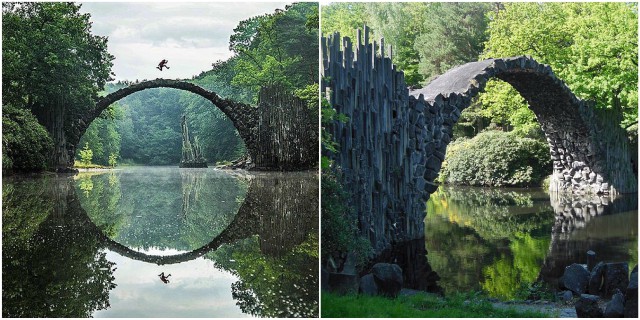There are plenty of unusual places to see as we roam the planet, like the majestic Wisteria tunnel in Japan. This site is the main feature of the Kawachi Fuji Garden and visitors can walk within a tunnel blooming in the color purple. Or there’s the so-called Tunnel of Love in Ukraine, which is actually a three-mile-long section of industrial railroad embraced by a green arch. The ride can be taken in between the two Ukranian towns of Klevan and Orzhiv.
Unlike such landmarks as the Eiffel Tower in Paris or the Brandenburg Gate in Berlin, these sites do not make the front page of a travel guide, but they do provide an extraordinary experience. Across Europe, oftentimes lurking hidden in nature or in the proximity of some lesser-known city, are the so-called Devil’s Bridges.
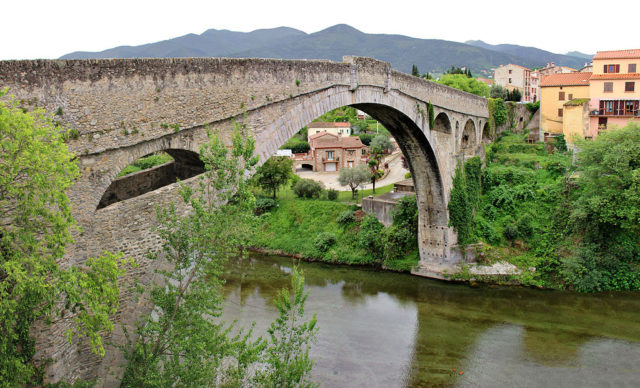
These are typically very old arch bridges, splendid examples of masonry workmanship, and in the times in which they were built, they made for a great technological and architectural achievement. What’s even more interesting is that these Devil’s Bridges are associated with folklore. As the name of the bridge goes, one of the main characters in the tale is, of course, the Devil himself.
As mentioned, Europe has many of these bridges. France alone possesses around 50, and they are known as Pond du Diable. They can also be found in Italy, under the name Ponte del Diavolo. More can be seen in almost any corner of the old continent, from Portugal on the Atlantic Ocean to Estonia on the Baltic, or from the United Kingdom in the northwest to Romania and Bulgaria on the Balkans. But probably the most spectacular example of this type of bridge is nearly hidden in Kromlau Park, the largest park to be found in the German region of Saxony.
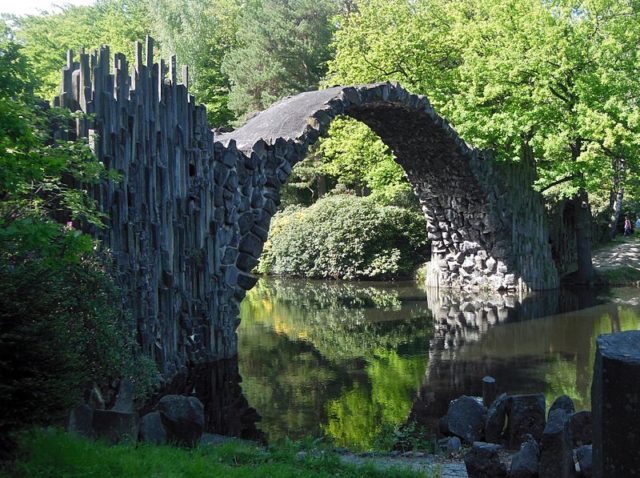
The Kromlau Park’s bridge is also dubbed the Rakotzbrücke, and the most striking trait of this bridge is its parabola, designed as such to form one-half of a flawless circle. Therefore, when then the waters beneath the bridge are calm and the light is right, it forms an illusion of a splendidly complete circle made of stone, the dream of any photographer. Under these circumstances, the majestic sight of the Rakotzbrücke offers a fairy tale experience for spectators.
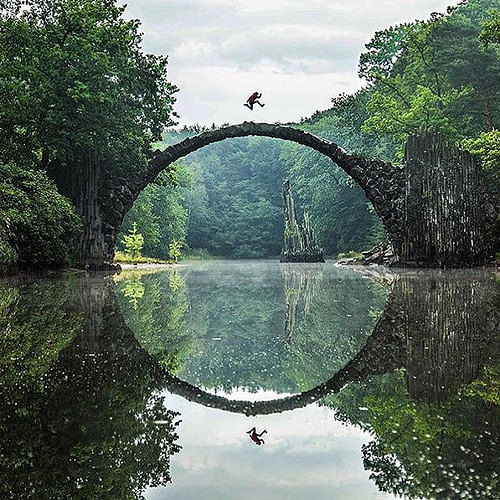
According to legend, these unique bridges were made with the help of the devil. But they all developed on their own in distinct European countries. In the majority of bridge narratives, there is a dose of enmity between the bridge builder and Satan. At first, the builder pursues a deal in which the Devil helps the bridge construction, and in return, the devil will claim the soul of the very first living being who happens to walk across the arch.
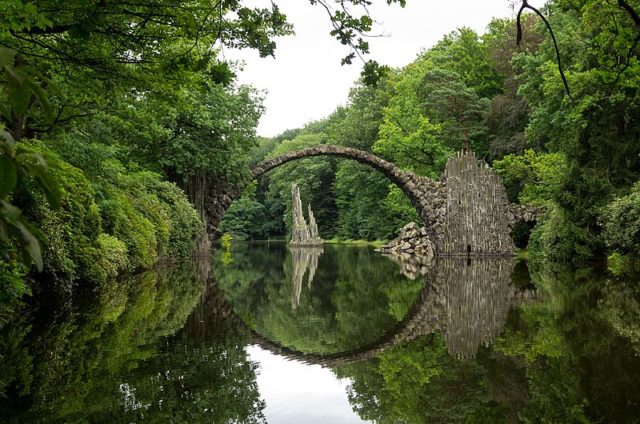
The end of these stories are also predictable, as the builder always looks for a way to trick the devil. He usually lures an animal, maybe a dog, to cross the bridge and to save the life of a human. But the Rakotzbrücke legend supposedly ends bit differently. Upon completion of the bridge, it is the builder himself who walks the bridge and sacrifices his own life to Satan.
Most of the Devil’s Bridges in Europe were erected in the medieval days, or to be more exact, in the period between 1000 and 1600 AD. However Rakotzbrücke appears to be a bit newer than that. This bridge was completed in 1860, after its construction had been commissioned by local town authorities. The marvelous piece blends fieldstone and basalt in certainly one of the finest examples of its kind. In order to compose the basalt columns, the bridge builders needed to ship the material from far away quarries.
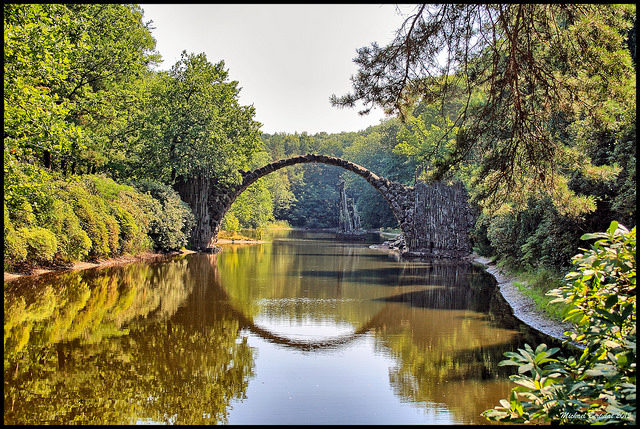
Kromlau Park, where the Rakotzbrücke sits, opens into an area of 200 acres and is located within the realm Ofblenz, a little less than four miles from the German border with Poland. The park makes a great example of an English garden style, having numerous ponds and lakes. No fee need be paid to enter the site, but crossing the bridge, the park’s most prominent feature, is not allowed, in order to preserve it.
Should you need an Instagram hit or just to take the moment to enjoy an extraordinary view, the Rakotzbrücke will make for a perfect destination either way.
